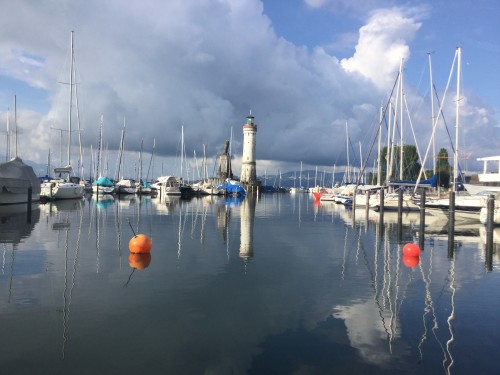
Morning in Lindau: great scenery and wonderful talks.
By Hamish Johnston at the Lindau Nobel Laureate Meeting in Germany
It has been a great morning of physics talks this morning here at the 66th Lindau Nobel Laureate Meeting. Hiroshi Amano, who shared the 2014 Nobel Prize for Physics for the development of the blue LED, spoke first about the practical aspects of his creation.
Electronic displays and low-energy lighting are two obvious applications for blue LEDs. Amano pointed out that LED lighting uses 1/8 the energy of incandescent bulbs and 1/2 that of fluorescent lights. But perhaps more importantly, he says that this low-energy operation means that light can be introduced to remote and poor parts of the world. This has the potential to boost education because it enables children in areas with no mains electricity to read and study at night.
Water purification using UV light is another important application of Amano’s LEDs, which could also be important in the developing world. Medical uses include dermatology and sterilization along with resin curing in dentistry.
One application that I hadn’t heard of before is making high-power transistors that can convert DC electricity into the AC sort that we use in our homes. Apparently the compound semiconductors developed to make blue LEDs can be used to make transistors that are 10% more efficient than existing devices.
Not bad for research that started out looking for better displays for handheld game consoles.
Guidelines
Show/hide formatting guidelines
this text was deletedwhere people live in harmony with nature and animals</q>
Some text